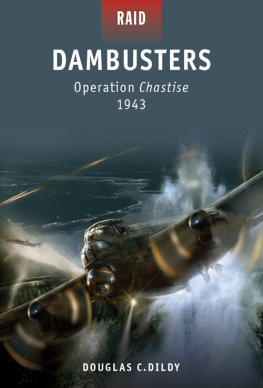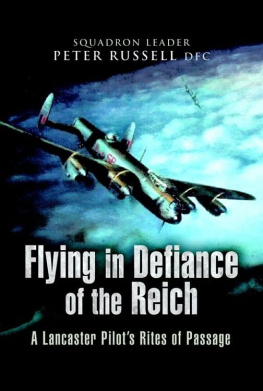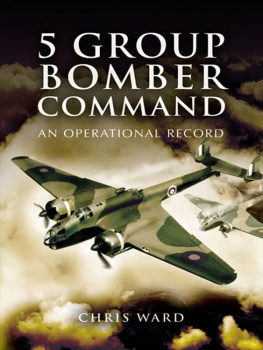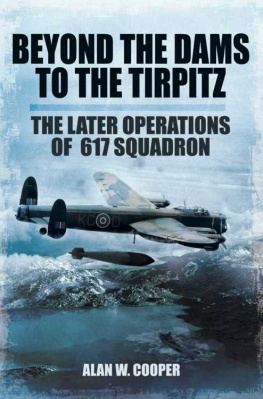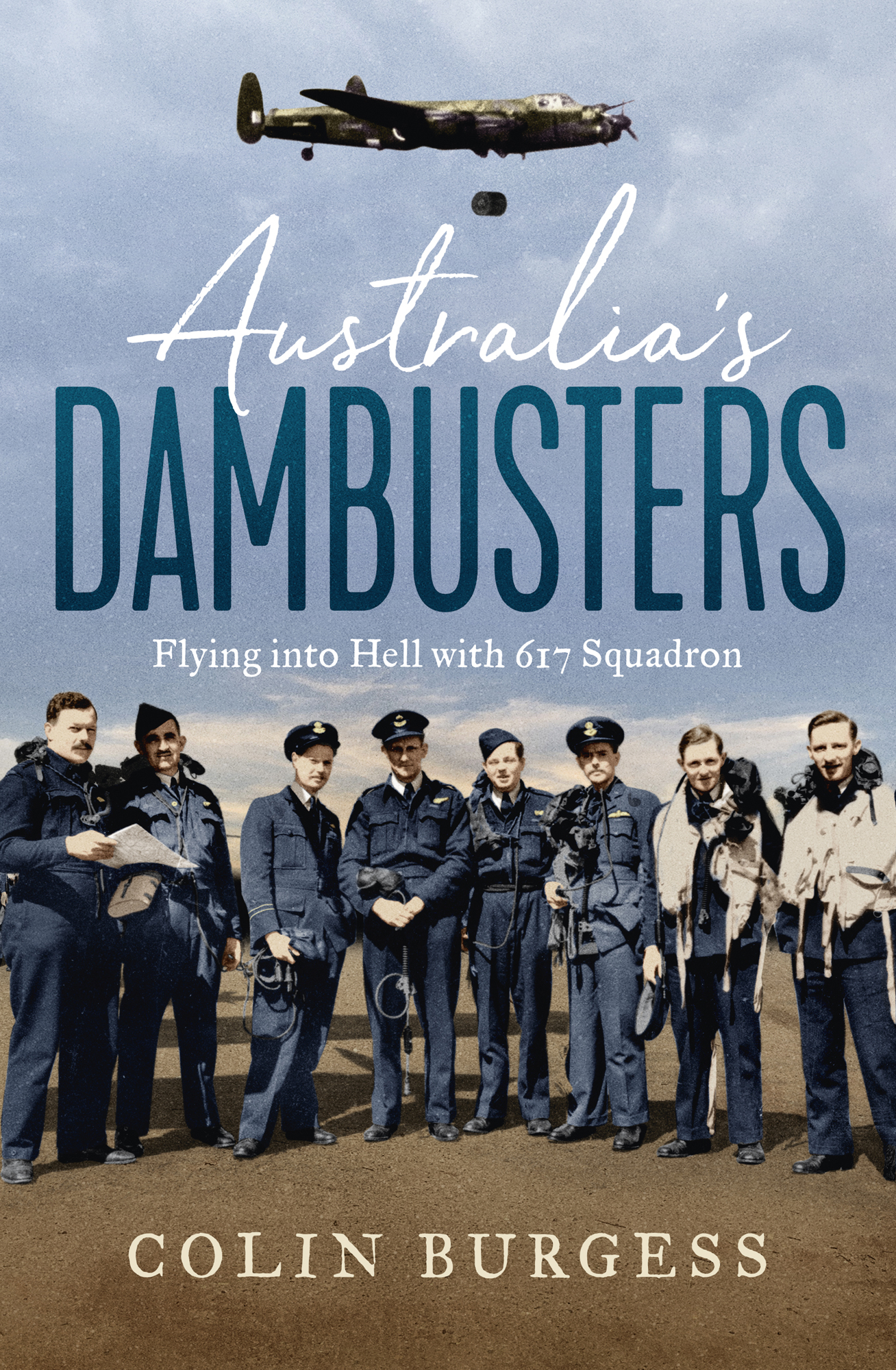Contents
Guide
Australias Dambusters
Flying into Hell with 617 Squadron
Colin Burgess
AUSTRALIAS DAMBUSTERS
First published in Australia in 2021 by
Simon & Schuster (Australia) Pty Limited
Suite 19A, Level 1, Building C, 450 Miller Street, Cammeray, NSW 2062
Sydney New York London Toronto New Delhi
Visit our website at www.simonandschuster.com.au
Colin Burgess 2021
All rights reserved. No part of this publication may be reproduced, stored in a retrieval system, or transmitted in any form or by any means, electronic, mechanical, photocopying, recording or otherwise, without prior permission of the publisher.
ISBN: 9781760859237
ISBN: 9781760859244 (eBook)
Cover design: Luke Causby/Blue Cork
Cover images: Photo of plane Imperial War Museum IWM FLM2332; photo of men involved in the Dams Raid supplied by the author
This book is dedicated to all those who served on the ground and in the air with the gallant leaders and aircrew members of No. 617 Squadron, RAF.
Walking the darkness, far from home, at midnight,
Sometimes I see them, lighted at the wing-tips,
The cockpits winking with the spark of signals,
The outbound bombers.
My thought perceives them switch away the sidelights
And cease to signal as they drive to danger,
From England, over sea, to blackened Europe
Where fire awaits them.
I say, Oh come home safely, midnight darers,
And may a day dawn when the youth of nations
Will hold like purpose, striving to make perfect
The life that binds us.
John Masefield (18781967)
Other military history books by Colin Burgess
The Diggers of Colditz (with Jack Champ)
Prisoners of War (with Hugh Clarke and Russell Braddon)
Barbed Wire and Bamboo (with Hugh Clarke)
Freedom or Death (republished as Australias Greatest Escapes)
Destination: Buchenwald
Bush Parker: An Australian Battle of Britain Pilot in Colditz
ILLUSTRATIVE MATERIAL
T HE AUTHOR HAS AMASSED THE majority of photo illustrations used in this publication over many years, photographically copied from those submitted by many 617 Squadron participants, family members and researchers, as well as numerous other sources including the Australian War Memorial. Some were used in the early 1980s in compiling an in-house Qantas Airways crew magazine article on the squadron. These were correctly acknowledged and any royalties due settled at that time. The origin of countless other photographs after more than three decades is unknown, however where the source can be correctly identified it has been acknowledged beneath the photograph. If a correct acknowledgement has not been given this is regretted, however the author and publishers would welcome any amendments for use in any possible future editions of this book.
INTRODUCTION AND ACKNOWLEDGEMENTS
T HE STORY OF 617 (D AMBUSTERS ) RAF Squadron, Barnes Walliss bouncing bombs, and the breaching of the mighty Ruhr dams is without doubt the best known true-life adventure associated with Bomber Command in the Second World War. Several books have been written about the raid and on the squadrons exemplary leader, Guy Gibson, VC, although people are mostly familiar with Paul Brickhills best-selling The Dam Busters, and the inspiring 1955 black and white film based on that book.
This updated and revised version of the story, first published in 2002, seeks to tell more fully the extraordinary story of the Australians in 617 Squadron, RAF. It describes not just those who took part in the amazing and heroic events of 16/17 May 1943, but the men from Down Under who later became an integral part of undoubtedly the most famed squadron in Bomber Command during its latter war years.
617 Squadron was first known as the Secret Squadron. However it soon gained something of a reputation as a suicide squadron, because its airmen were assigned many of the most difficult and dangerous missions of the war. The Dambusters raid on the Ruhr dams was certainly the most renowned heavy-bomber air attack of the Second World War, but there was a heavy price to pay: eight of the 19 Lancaster bombers assigned to the task failed to return; 53 airmen were killed and another three saw the war out as prisoners of war of the Luftwaffe.
The loss of so many young lives on a single operation was a tragic consequence, but the destruction of the Ruhr dams created massive and widespread flooding, severely interrupting or limiting German industry, communications and utility services. It also caused the redeployment of vast numbers of troops and weapons, and a substantial effort to repair the dams and other facilities.
Given these facts, the raid could be counted as a successful operation. Even more than this, however, it provided a huge morale boost to the beleaguered population of Britain, who had stoically endured more than three long years of war, widespread destruction, the loss of many lives, and suffered a grave uncertainty about the future. The effect was almost one of celebration; their stubborn defiance had paid off, while Hitler had received a vast setback on German soil. This had been delivered by a few dozen airmen dropping a remarkable weapon designed to bounce across the surface of lakes, just as Admiral Horatio Nelson had achieved greater range for his cannonballs a century earlier by bouncing them off the water during his naval engagements. The Dams Raid was certainly celebrated as a decisive turning point on the road to ultimate victory.
Wing Commander Guy Gibson, already awarded four medals for bravery, deservedly received the Victoria Cross for his leadership and valour on Operation Chastise, as the raid was codenamed. It is widely recognised, however, that other men on that fateful night were equally deserving of this highest award for gallantry, in particular Australian-born Flight Lieutenant Harold B.M. Mick Martin, DFC.
The Dambusters raid was the sole occasion on which Gibson had the privilege of leading 617 Squadron, but subsequent commanders of the squadron were some of the most highly decorated and resourceful airmen of the Second World War, while the aircrews covered themselves in glory. It was considered an honour, albeit a highly dangerous one, to be assigned to 617 Squadron, and a large number of these men were from Australia. This, then, is their story.
For the most part, this book was written several years ago as a series of aviation articles for the Qantas Airways crew magazine, Transit. In researching the first of the articles in the early 1980s I was fortunate enough to meet five of the Australian contingent that had taken part in the Dams Raid that spring evening of 16/17 May 1943. They were Sir Harold Mick Martin, David Shannon, Sir Jack Leggo, Bob Kellow and Lance Howard, all of whom are now sadly gone. Later, when I expanded the story to include the Australians who joined 617 Squadron after the Dams Raid, many former squadron members proved to be of the same inestimable assistance.
As a novice writer back then, but one who had always thrilled to tales of high adventure and daring, two particular memories stand out especially for me. The first was in meeting and talking with one of the noblest men in both war and peacetime, Group Captain Leonard Cheshire, VC, DSO and two Bars, DFC (later to become Lord Cheshire). He had read and approved my draft of the story of the Australians in the Dams Raid, and handed me a short but heartfelt tribute to the men that I could include. This came with the earnest entreaty that I should one day consider writing a book on my countrymen in 617 Squadron. His words are reproduced in the Prologue to Part I. The second followed the publication of the Dams article, when I met Sir Harold Martin during a trip to London. He had been quite taken with my efforts in telling the story so factually, and when our meeting was over he presented me with a magnificent Robert Taylor reproduction painting of the Dams Raid, personally signed and inscribed to me. It is also countersigned by the wartime head of Bomber Command, Marshal of the Royal Air Force Sir Arthur Harris, and is a memento that I shall always treasure.

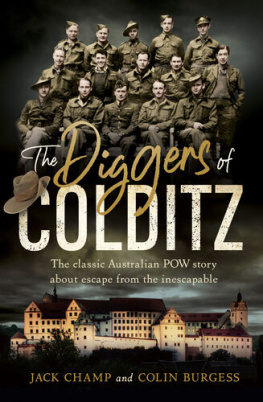

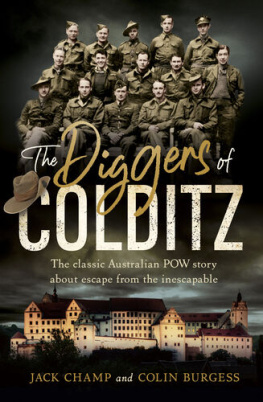

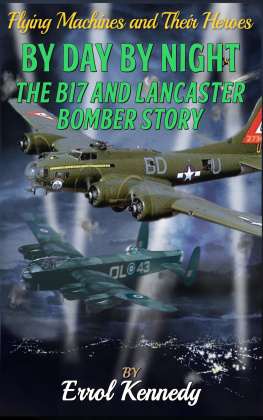
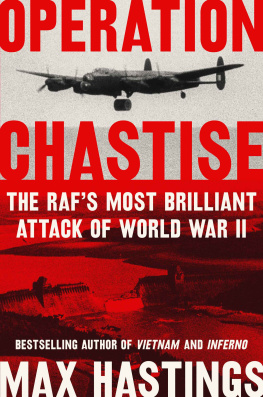
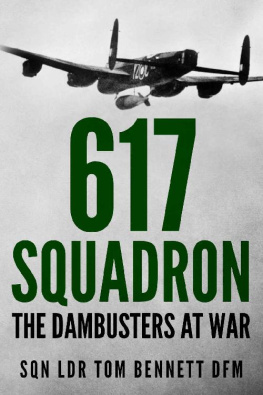
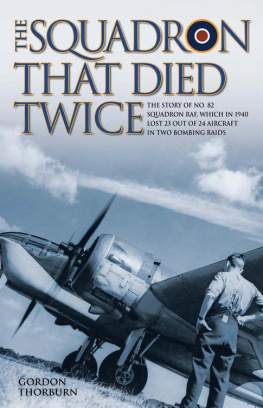
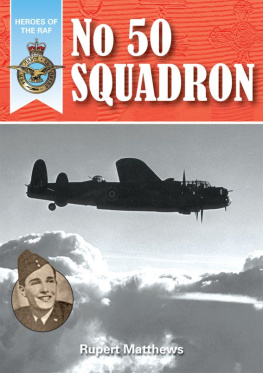
![Bar Wing Commander Guy P. Gibson VC DSO - Enemy Coast Ahead [Illustrated Edition]](/uploads/posts/book/180257/thumbs/bar-wing-commander-guy-p-gibson-vc-dso-enemy.jpg)
